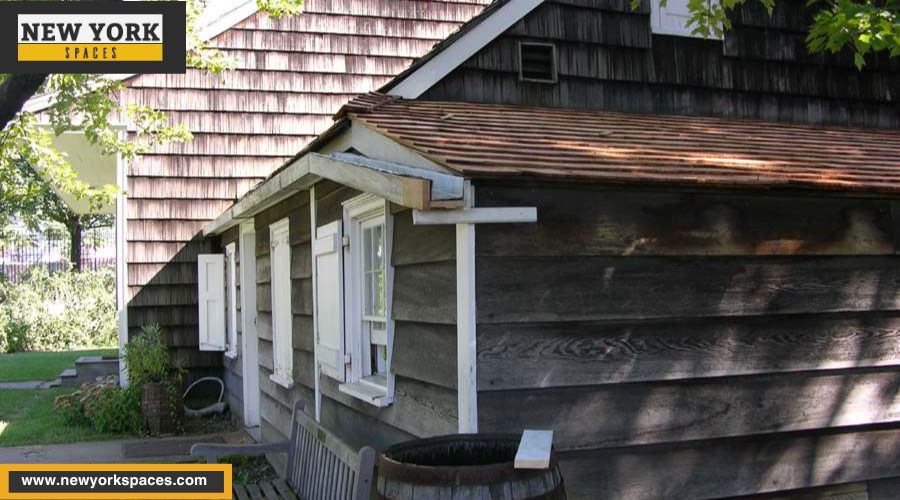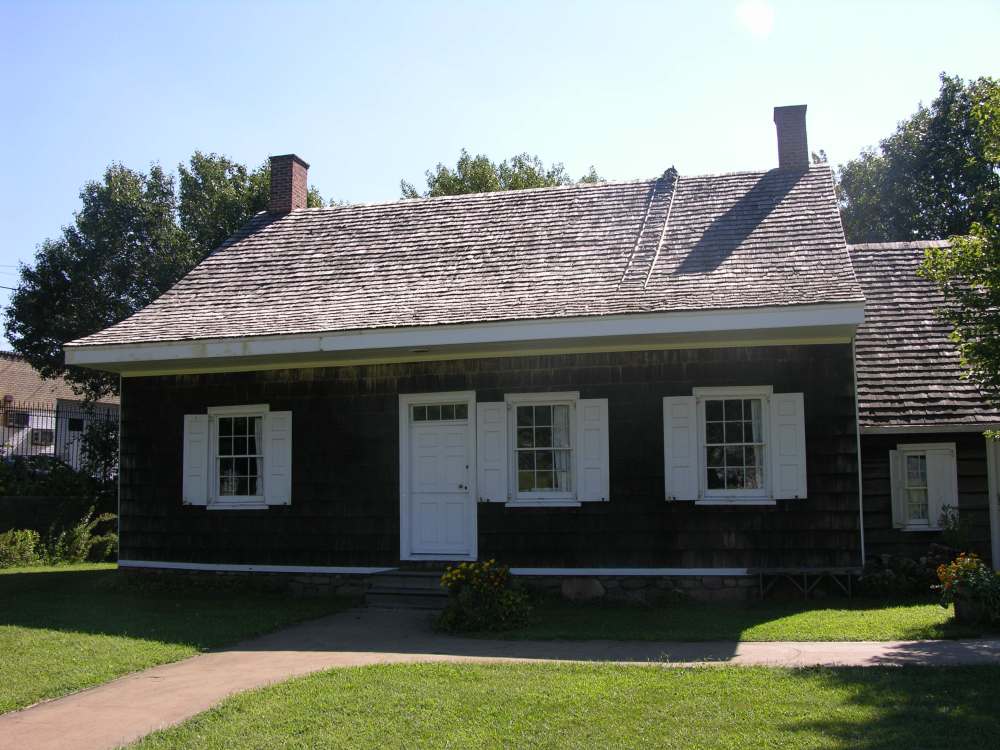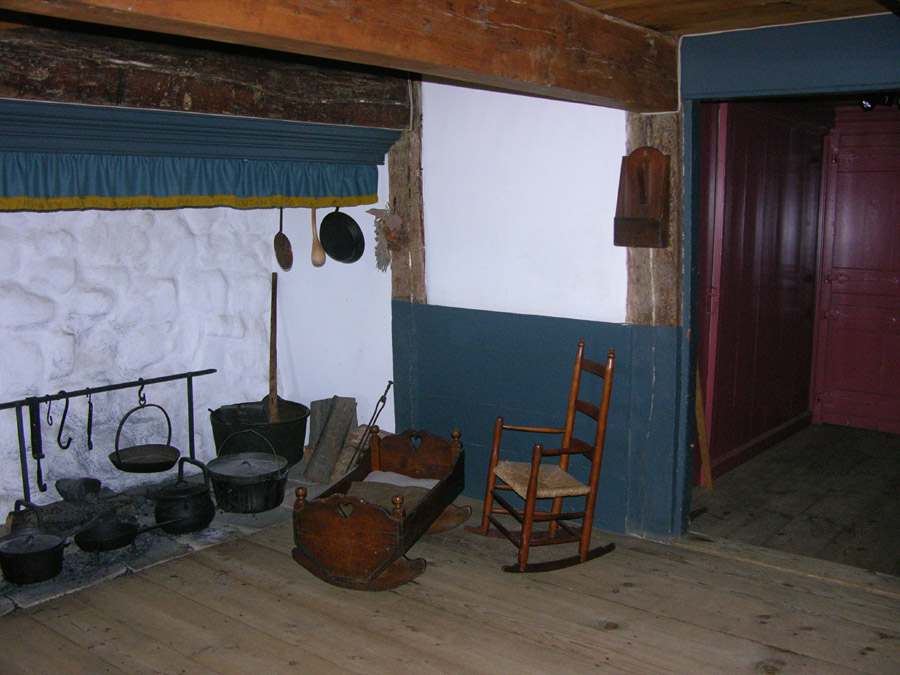The Wyckoff House, or Pieter Claesen Wyckoff House, is a monument shrouded in history, standing as a testament to early American settlers’ resilience and everyday life. Nestled in Brooklyn, New York, this structure is not just an ordinary house; it is the oldest surviving example of a Dutch saltbox frame house in America and a symbol of the rich cultural tapestry that has woven the fabric of New York City. But beyond its historical and architectural significance lies a deeper mystery that captivates historians, architects, and casual observers alike. In this blog post, we delve into the Wyckoff House’s enigma, exploring its origins, significance, and lingering questions that make it a subject of fascination.
Historical Context of the Wyckoff House
The history of the Wyckoff House is a captivating narrative that offers a unique glimpse into the early days of European settlement in America. This section expands on the initial construction of the house and its evolution over centuries, shedding light on its significance in American history.
The Early Days: A New Life in a New World
Journey to America: The tale of the Wyckoff House begins with Pieter Claesen Wyckoff’s migration from the Netherlands, a story symbolic of the dreams and struggles of early settlers. In the quest for a better life, Pieter and his family embarked on a perilous journey across the Atlantic, eventually settling in what was then known as the New Netherlands colony. This move was part of a larger pattern of Dutch colonization, which played a pivotal role in shaping the cultural and architectural landscape of the New World.
Establishing Roots: Constructed around 1652, the Wyckoff House was not just a dwelling but a symbol of hope and perseverance. Pieter, his wife Grietje, and their eleven children faced the daunting task of building a life from scratch in an unfamiliar land. With its modest beginnings, the house was a testament to their determination. It served as the family’s anchor, providing shelter and a sense of belonging in a vast, untamed territory.
The Evolution of the House: Adapting to Change
- Phase One: The Original Structure
Initially, the Wyckoff House was a simple one-room structure. This modest start was common among early settlers, who prioritized basic shelter over architectural complexity. The original design reflected the family’s practical needs and limited resources, serving as a multifunctional space for living, working, and gathering. - Phase Two: Expansion for a Growing Family
As the Wyckoff family grew, so did their needs. The house underwent its first major transformation, evolving from a single room to a more spacious abode. This expansion allowed for separate living quarters and workspaces, significantly shifting how the family interacted with their environment. - Phase Three: Architectural Maturation
Over the centuries, the house saw further modifications, reflecting the changing times and technologies. Additions included more rooms, enhanced structural elements, and architectural details that moved beyond the purely functional. These changes mirrored the evolution of American architecture, transitioning from the rudimentary designs of early settlers to more sophisticated structures that catered to comfort, aesthetics, and social status. - Preservation of History
The physical alterations to the Wyckoff House serve as a tangible chronicle of architectural and familial evolution. Each layer of construction tells a story, from the survival and adaptation of the early settlers to the rich, complex tapestry of American life that unfolded over generations.
Architectural Significance of the Wyckoff House
The Wyckoff House is a historical monument and a beacon of architectural innovation, reflecting the rich Dutch colonial influence and the ingenuity of 17th-century construction techniques. This section delves into the architectural nuances that make the Wyckoff House a subject of study and admiration among historians and architects alike.
A Dutch Influence: Blending Form and Function
The Saltbox Shape: The distinctive saltbox shape is at the heart of the Wyckoff House’s design, a hallmark of Dutch colonial architecture. This design, characterized by its long, pitched roof that extends down to the back, is not merely aesthetic but serves a functional purpose. The asymmetrical slope of the roof was ingeniously devised to combat the harsh winters of the New World, facilitating snow and rain runoff and reducing the likelihood of damage or collapse under heavy snow.
A Cultural Imprint: The architectural style of the Wyckoff House serves as a tangible link to the Dutch roots of its original inhabitants. The Dutch influence on American architecture is evident in the simplicity and practicality of the design, reflecting a blend of aesthetic sensibility and environmental adaptation. This style became a defining feature of the region, showcasing how immigrant cultures have left an indelible mark on the architectural landscape of the United States.
Construction Techniques: A Testament to Craftsmanship
Timber Framing: The construction of the Wyckoff House showcases the use of heavy timber framing, a technique prevalent in 17th-century Dutch architecture. This method involves creating a structural skeleton from large wooden beams carefully joined together without using nails. The timber used was often oak, known for its strength and durability, ensuring the structure’s longevity.
Mortise and Tenon Joints: The mortise and tenon joints are integral to the timber framing, a testament to the era’s craftsmanship. This method of joining two pieces of wood involves inserting a tenon (a protruding piece of wood) into a mortise (a corresponding cavity) to form a secure, interlocking connection. This technique, requiring precise craftsmanship, created a robust framework that could withstand the elements and the test of time.
Adaptation and Innovation: The construction techniques employed in the building of the Wyckoff House were not just borrowed traditions but also reflected adaptation and innovation by the settlers. Faced with the challenges of a new environment and the availability of local resources, the early American settlers modified traditional Dutch building methods to suit their needs, developing a unique architectural style that combined European influences with New World ingenuity.
The Mystery Unfolds
The Wyckoff House, with its rich history and architectural significance, also holds within its walls layers of mystery that intrigue historians, architects, and visitors alike. These mysteries go beyond the physical edifice, touching upon the very essence of the lives unfolding within its confines and the secrets the house has kept over centuries.
The Stories of Its Inhabitants: Echoes of the Past
Untold Narratives: The story of the Wyckoff family encapsulates the broader immigrant experience in America, marked by hopes, hardships, and the pursuit of a new beginning. Yet, the intimate details of their lives—their daily routines, the challenges they faced, and the joys they celebrated—remain largely enigmatic. The house, a silent custodian of history, holds within it the echoes of these untold narratives, waiting to be discovered and told.
Generational Saga: Beyond Pieter Claesen Wyckoff and his immediate family, the house was home to successive generations, each adding their chapter to the unfolding story of this remarkable dwelling. The evolution of the family, against the backdrop of a changing America, presents a fascinating yet partially obscured view into the personal histories and social dynamics of the times.
Hidden Features and Secrets: Uncovering the Past
Architectural Revelations: The renovation and restoration process has peeled back layers of history, revealing hidden architectural elements that offer clues to the house’s original state and its modifications over time. Once concealed behind newer constructions, original fireplaces have come to light, providing insights into the Wyckoff family’s domestic life and the era’s technological advancements.
Artifacts and Relics: Items left behind by the Wyckoff family, discovered during restoration efforts, serve as tangible links to the past. Each artifact, from tools and household items to personal belongings, tells a part of the family’s story, offering glimpses into their daily lives, occupations, and the era’s material culture.
The Mystery of Adaptation: Uncovering hidden features and secrets within the Wyckoff House also raises questions about the adaptations and changes the structure and its inhabitants underwent. These discoveries prompt a reevaluation of what is known about 17th-century life, architecture, and the survival strategies of early settlers in the New World.
The Enigma of Folklore and Legends Surrounding the Wyckoff House
Historic landmarks like the Wyckoff House preserve architectural and cultural heritage and serve as repositories for a rich tapestry of folklore and legend. Often passed down through generations, these narratives add charisma to the house’s storied past. Here, we delve into the various categories of folklore and tales associated with the Wyckoff House, highlighting how they enhance its enigmatic allure.
Ghostly Encounters and Hauntings
The Wyckoff House is said to be home to spectral presences from centuries past. Visitors and caretakers have reported unexplained phenomena: footsteps in empty rooms, whispers in the dead of night, and fleeting shadows. Such accounts breathe life into the belief that former inhabitants, or those connected to the house’s history, linger as ethereal guardians.
Historical Mysteries and Unsolved Riddles
Beyond the supernatural, the house is a vault of historical mysteries. There are tales of hidden rooms or secret passages used during tumultuous periods, possibly for the Underground Railroad or as hideouts during conflicts with Native Americans or other settlers. These undocumented features of the house spark curiosity and speculation about its role in unrecorded historical events.
Legends of Love, Loss, and Betrayal
The emotional tapestry of those who once called the Wyckoff House home is woven into its lore. Romantic tales of love found and lost within its walls, stories of family betrayals, and tragic accounts of lives cut short by the harsh realities of colonial life all contribute to the house’s mystique. While perhaps embellished over time, these narratives underscore the human element of the house’s history.
Cultural Interactions and Folk Beliefs
The house also stands as a testament to the melting pot of cultures in early New York. Legends reflect the amalgamation of Dutch settler beliefs with those of the indigenous peoples and other immigrant groups. Folk tales of protective spirits, curses, and blessings highlight the diverse spiritual and cultural practices that have left an indelible mark on the house.
In exploring the Wyckoff House, one ventures beyond the tangible into the realm of the imagined and the spectral. The folklore and legends associated with it are as much a part of its fabric as its physical structure. Whether rooted in fact or fiction, these stories invite us to ponder the lives of those who came before and the enduring legacy of the past in our present.
The Wyckoff House in the Present Day
The Wyckoff House transcends its physical bounds to become a vibrant center of education and preservation, intertwining the rich tapestry of America’s past with the dynamic pulse of the present.
A Living Museum: Educating and Inspiring
Interactive Learning Experience: The Wyckoff House has evolved into an immersive experience for visitors, offering a window into the colonial era through hands-on activities, guided tours, and educational programs. It uniquely combines historical education with engaging experiences, allowing visitors to step back in time and understand the intricacies of colonial life, agriculture practices, and the socio-economic conditions of early New York City.
Community Engagement: Beyond its role as an educational resource, the Wyckoff House acts as a community hub, hosting events, workshops, and cultural celebrations that foster a sense of connection with the past. It stands as a testament to the enduring relevance of historical understanding in contemporary society, bridging generations through the shared exploration of history.
Preservation Efforts: Sustaining the Legacy
A Collaborative Endeavor: The preservation of the Wyckoff House is the result of concerted efforts by historians, local communities, the City of New York, and preservationists. This collaborative approach has been crucial in navigating the challenges posed by urbanization, neglect, and the ravages of time, ensuring the house remains a testament to resilience and dedication.
Technological Integration: Modern preservation techniques, including digital archiving, structural reinforcements, and environmentally sustainable practices, have been integrated to maintain the house’s integrity while making it accessible to future generations. These methods underscore the balance between historical fidelity and the necessities of modern maintenance.
Lingering Questions and the Path Forward
The journey of the Wyckoff House is ongoing, with the future holding both challenges and opportunities for deepening our understanding of the past and ensuring the legacy endures.
Unearthing Hidden Narratives
The Quest for Knowledge: Despite the wealth of information about the Wyckoff family and their time, vast areas of their history remain in mystery. Future archaeological endeavors and scholarly research promise to shed light on the unseen aspects of their lives, offering new perspectives on colonial America’s social, economic, and cultural fabric.
Preserving for Posterity
Innovative Preservation: The encroachment of urban development on historical sites poses a significant challenge, necessitating innovative solutions to preserve these landmarks. Strategies such as digital preservation, public-private partnerships for maintenance, and educational initiatives aimed at raising awareness about the importance of historical sites are pivotal in this endeavor.
A Collective Responsibility: The preservation of the Wyckoff House and similar historical landmarks is a collective responsibility, requiring the engagement of the community, policymakers, and historians. It is a call to action for all to contribute towards safeguarding our shared heritage, ensuring it remains a source of knowledge, inspiration, and reflection for generations to come.
Conclusion
The Wyckoff House, as a living museum and a testament to the resilience and ingenuity of early American settlers, embodies the rich tapestry of America’s colonial past while posing intriguing questions about the untold stories within its walls. Its preservation efforts underscore the importance of safeguarding historical landmarks, not only as a tribute to our ancestors but also as a beacon for future generations to understand and appreciate the complexities of history. Through its educational programs, community engagement, and the ongoing quest to unravel its mysteries, the Wyckoff House continues to inspire a deep appreciation for the intricate narrative of human endeavor, adaptation, and survival, bridging the gap between the past, present, and future in a compelling narrative of cultural heritage and continuity.



